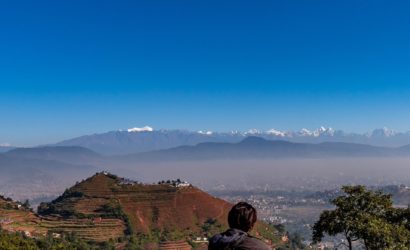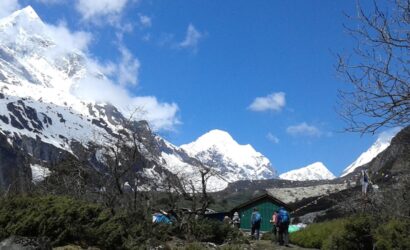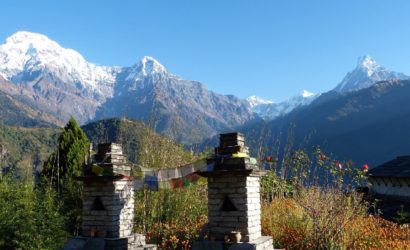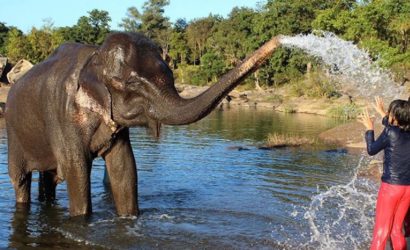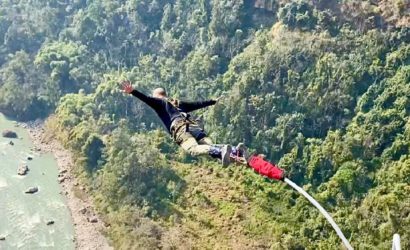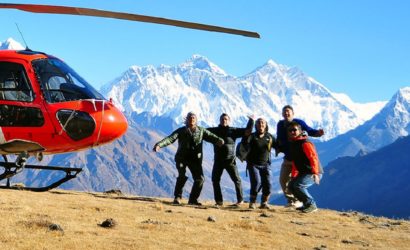The Chitwan National park is home to more than 50 mammal species, over 567 birds, and 55 amphibians and reptiles. The park is popular among avid bird watchers who can observe numerous species of resident and migrant birds in the park. Separate zones have been exclusively identified in the National park for bird watching.
The Park has Rapti River inhabiting various species of birds such as Purple Swamphen, Darter, Heron, Black Stork. The Park’s grassland is popular habitat for species such as Lesser and Bengal Floricans, and the forest is the home to Giant Hornbill, Peacock, Owls, Eagles, Babblers, Warblers, Cuckoos, Orioles, woodpeckers.
The Bird-watching in Chitwan Tour also includes the Kathmandu and Pokhara Tour. The tour offers a rare combination Bird watching adventure in Chitwan with tour around the Kathmandu and Pokhara city, known for snow-clad mountains, crystal clear lakes and streams. You can enjoy the green hills, sunrise over the Annapurna Range and the Fishtail Mountains in the Pokhara .
Then we take you to the heart of the Royal Chitwan National Park. View the wild animals & wildlife in their natural habitat.Another beautiful destination included in this package is Nagarkot, located 32 kilometers east of Kathmandu, is situated at an altitude of 7,133ft. above sea level.
It is a year round holiday resort. The panorama of the major peaks of most of the eastern Nepal Himalayas. the breathtaking view of the sunset and the sunrise.
Upon your arrival in the Kathmandu airport after completing your custom formalities Visa, etc. pick up your luggage and look for our airport representative from Himalaya Discovery Adventures, who will display your name on the board at the arrival gate.
You will be greeted by our representative and transferred to your hotel by private tourist vehicle. Overnight in Kathmandu.
Today is free for sightseeing in Kathmandu. You may wish to visit Durbar Square in the heart of the old city where the old Royal Palace, with its intricate woodcarving is located. The whole area is a maze of temples and images. Leading away from the square in all directions are narrow alleys, full of the most amazing variety of shops and stalls.
Some of these landmarks are considered World Heritage Sites including the historic Bhaktapur Durbar Square, the famous ‘Monkey Temple’ Swayambhunath and Buddhists shrine Buddhanath which is one of the largest Stupas in the world. Overnight in Kathmandu.
Chitwan is situated at a distance of about 160km away from Kathmandu. The drive will take us about 5 hours. Chitwan National Park is a safe haven for some of the endangered species of birds and animals in the world. It is home to a large variety of birds as well as the country’s remaining Tigers and the amazing one horned Rhinoceros.
Here we can view a host of astonishing bird which include the Chestnut-capped Babbler, Small Pratincole, Blue-bearded Bee-eater, River Lapwing, Long-tailed Shrike, Emerald Dove, White-browed Wagtail, Collared Falconet, Changeable Hawk-eagle, Brown Crake, Red Jungle fowl, Indian Peafowl, Striped Tit-babbler, Jungle Owlet, Black-rumped, Himalayan and Greater Flamebacks, Red-headed Trogon, Small Minivet, Spot-winged Starling, Hill Myna and Chestnut-crowned, Speckled Piculet, Greater and Lesser Yellownapes, Grey-headed Woodpecker, Great Hornbill, Green-billed Malkoha, Red-breasted and Blossom-headed Parakeets, Jungle and White-bellied Yuhina, Crimson Sunbird, Streaked Spiderhunter and perhaps Black Baza can also be seen here. Overnight in Chitwan.
We will spend this day as well watching amazing mammals and birds at the Park. A boat ride across the Rapti River is a wonderful experience. Overnight in Chitwan.
After breakfast, Drive to Pokhara . It will takes about 3 to 4 hours to reaching in Pokhara valley. Pokhara is the very famous places amazing place knows as the Lake city in Nepal. Where you have a newly experience about the Pokhara valley, could be bird watching with experience of Boating on the fewa lake. Overnight in Pokhara.
Early in the morning, you will be headed out to the experience bird watching tour near by the lake city. after your bird watching you will be return back to hotel and have a breakfast, you will drive back to Kathmandu.
In the evening we will have a farewell dinner in a traditional Nepalese restaurant with cultural performances. Overnight in Kathmandu.
The trip ends, our airport representative will drop you to the Kathmandu International Airport for your flight departure from Nepal.


